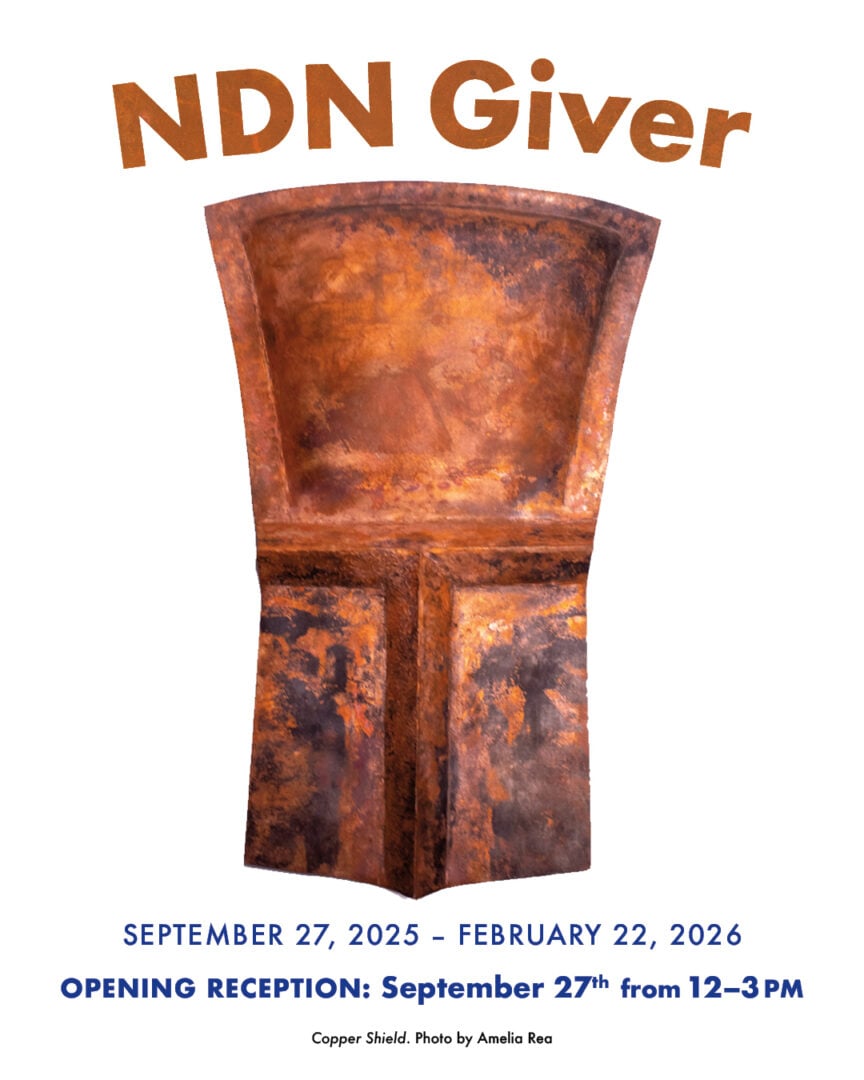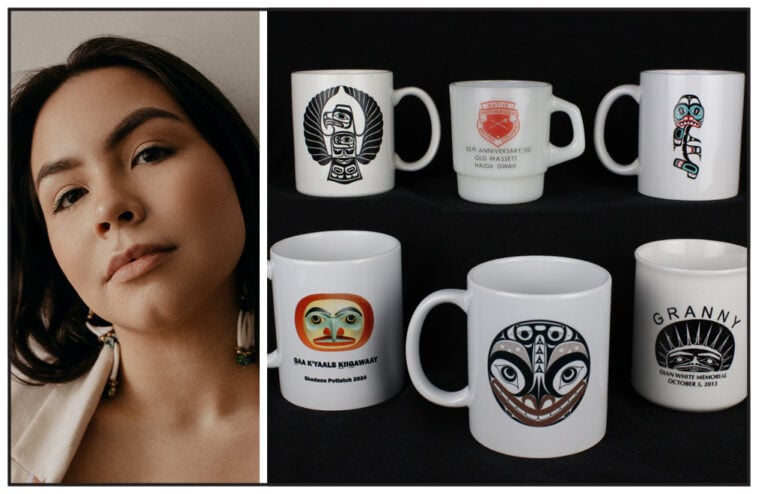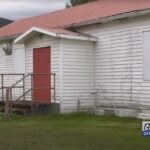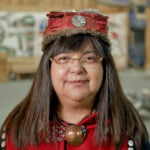By Crystal St. Pierre, Local Journalism Initiative Reporter, Windspeaker.com
The Bill Reid Gallery of Northwest Coast Art has launched an exhibit titled NDN Giver that will run until Feb. 22, 2026.
It is curated by Amelia Rea, who is the assistant curator at the gallery in Vancouver, and who is a Tsiits Git’anee clan member from Old Massett, Haida Gwaii, a group of islands off the northwest coast of British Columbia. NDN Giver explores the meaning and practice of First Nations gift giving.
“NDN Giver was inspired by a mug,” Rea explained. “I’m probably one of a very few curators who would look at a mug and think ‘I’m going to turn that into an exhibition’.”
“And when you accept a gift at a potlatch, you’re accepting the responsibility to carry that forward. You’re now also accountable to the host. It’s about relationships and holding each other accountable, and also agreeing, affirming agreement with whatever took place.”
Amelia Rea, Assistant Curator at the Bill Reid Gallery and a Tsiits Git’anee clan member
Rae said she was at her auntie’s house, opened a kitchen cabinet, and what she saw gave her the idea.
“They’re very tall cabinets and it’s something I’d done many times before in my life at her house and ended up kind of stopping and looking at these, you know, hundreds of mugs that probably had all been gifted at potlatches,” Rae said. “And when you accept a gift at a potlatch, you’re accepting the responsibility to carry that forward. You’re now also accountable to the host. It’s about relationships and holding each other accountable, and also agreeing, affirming agreement with whatever took place.”
Rae then began looking deeper into potlatch ceremonies and how the gifts given become living pieces of law and relationships.
Potlatch ceremonies are a practice of the communities along the Pacific Northwest Coast, including the Haida, Kwakwaka’wakw, Tlingit, Coast Salish and Nuu-chah-nulth communities, among others.
“She’s kind of flipping it around because she’s talking about the generosity of community rather than taking things from people.”
Aliya Boubard, Head Curator of the Bill Reid Gallery
“In historical potlatches, a person would accumulate gifts by trading with people. Sometimes these things have been given at potlatches over and over again because that’s keeping it in circulation,” Rae said.

Poster for NDN Giver, on view at the Bill Reid Gallery of Northwest Coast Art from September 27, 2025, to February 22, 2026. Photo credit: Bill Reid Gallery of Northwest Coast Art on Facebook
The title of the exhibit is an effort to reclaim the phrase rooted in colonialism that stems from a misunderstanding and clash of cultural values about reciprocity and gift-giving.
“She’s kind of flipping it around because she’s talking about the generosity of community rather than taking things from people,” said Aliya Boubard, gallery head curator.
The phrase was used by settlers who accused Indigenous people of giving gifts and then taking them back. However, culturally, First Nations communities practice the act of giving gifts as part of an ongoing cycle of exchange. It is not a one-time transaction.
Potlatch ceremonies are held to commemorate life events, including births, marriages, name-giving, funerals or the inheritance of titles and rights.
During these ceremonies, there are speeches, songs, dances, feasts and gift-giving ceremonies where the hosts provide guests with gifts.
These gifts can be lavish or humble depending on the wealth of the hosting family; however, they are honoured by the recipients.
At future potlatch ceremonies, gifts received at one ceremony can be given away at another.
Settlers who viewed ownership as more of an individual event or in a more permanent way misinterpreted this practice and used the slur NDN giver as a derogatory expression used to insult someone who takes back a gift.
Potlatches were banned by the Canadian government from 1885 to 1951 under the Indian Act.
“We had many conversations on what they (Hall and Brown) could do for this show and decided on a Bentwood box, or a box of treasures, as a box of treasures is often the kind of centre point of a potlatch.”
Amelia Rea, Assistant Curator at the Bill Reid Gallery and a Tsiits Git’anee clan member
The exhibit opens with the recreation of the kitchen cabinets that sparked the idea for Rae and then travels into the featured artists’ contributions, including work that shows potlatches were not about the objects alone but rather the stories carried by them.
Scenes from the opening reception of NDN Giver at the Bill Reid Gallery of Northwest Coast Art on September 27th. NDN Giver is an exhibit curated by Amelia Rea that explores the meaning and practice of First Nations gift giving. Video credit: Bill Reid Gallery of Northwest Coast Art on Facebook
There are three artists’ work included in the exhibit, including Skil Jaadee White from the Yahgu Janaas clan of the Haida Nation, K.C. Hall, who is a Heiltsuk artist from Bella Bella, and Glathba Charlie Brown, who is also Heiltsuk.
“We had many conversations on what they (Hall and Brown) could do for this show and decided on a Bentwood box, or a box of treasures, as a box of treasures is often the kind of centre point of a potlatch,” Rae said. “A clan, a chief, would open their box of treasures and share both intangible and tangible wealth that are contained within this box.”
This could have included items such as masks and regalia, but could also be songs, ceremonies and stories.
White contributed a painting titled 3 a.m.
“I really feel that weight on my chest to do that. I felt a lot of pressure because I knew my community was watching me and I wanted to make sure I was doing right by them and, thankfully, they seemed very pleased.”
Amelia Rea, Assistant Curator at the Bill Reid Gallery and a Tsiits Git’anee clan member
“It shows what would happen at 3 a.m. at the potlatch, which is usually when the events kind of close in the wee hours of the morning, and it shows all this material wealth surrounding the fire waiting to be given to the witnesses that were present,” Rae said.
This being Rae’s first solo curated show, she really wanted to be respectful and responsible to her community.
“I really feel that weight on my chest to do that. I felt a lot of pressure because I knew my community was watching me and I wanted to make sure I was doing right by them and, thankfully, they seemed very pleased,” she said. “And it really just felt really right to showcase and curate at a gallery that is representing such a pillar (Bill Reid) for not just northwest coast art but for Haida art as a young Haida person.”
“You know, you’re richer for giving everything you have away rather than keeping everything for yourself. To share with community and your people, that makes you wealthy.”
Amelia Rea, Assistant Curator at the Bill Reid Gallery and a Tsiits Git’anee clan member
Bill Reid (1920-1998) was one of Canada’s most well-known artists. He aided in the revitalization of Haida art and culture. His work blended traditional Haida designs with contemporary expression.
Rae hopes individuals who attend the exhibit will walk away with a new perspective of potlatch ceremony and the act of giving.
“You know, you’re richer for giving everything you have away rather than keeping everything for yourself. To share with community and your people, that makes you wealthy,” she said.
For more information on the NDN Giver exhibit, visit the Bill Reid Gallery of Northwest Coast Art.




